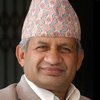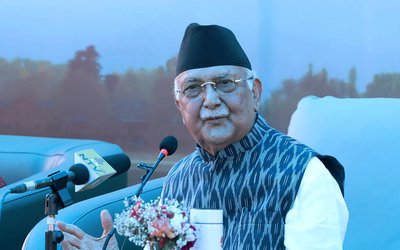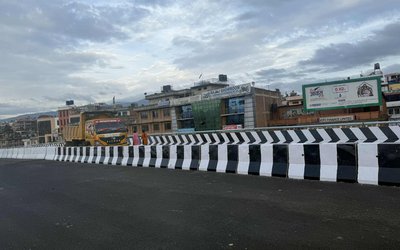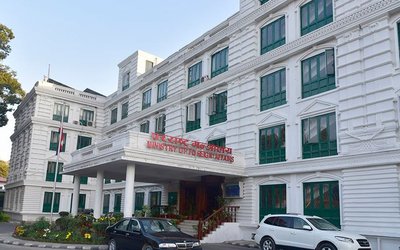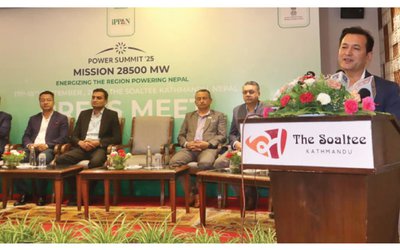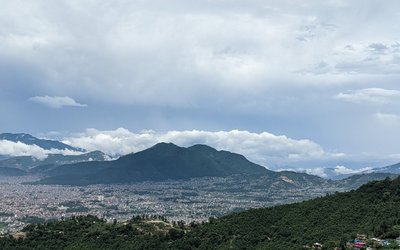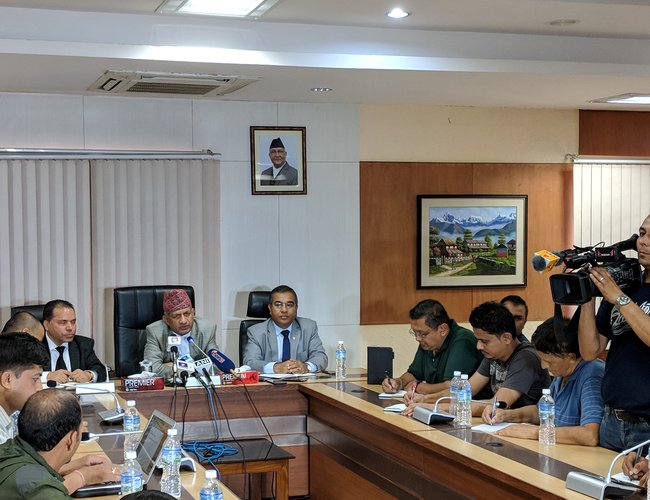
As we wind up our preparations for the 4th BIMSTEC Summit and its preceding meetings, the programs of this kind will certainly help enrich our understanding about BIMSTEC and its role as a bridge between South Asia and South-east Asia. I believe today’s program has been an opportunity to deliberate on the realities and future priorities for the Bay of Bengal region.
As you all know the Fourth BIMSTEC Summit is being organized next week on the theme of ‘Towards a Peaceful, Prosperous and Sustainable Bay of Bengal Region’. This theme itself is an embodiment of the BIMSTEC member states’ lofty aspirations of peace, sustainable development and prosperity. I am confident that the Leaders will explore ways and means of realizing these common aspirations and chart out concrete actions in order to further strengthen and steer the BIMSTEC process towards these goals.
BIMSTEC region is bestowed with the abundance of natural, cultural and human resources. Nearly one-fourth of the world population lives in this region. The size of the economy of the region is over 3 trillion US Dollar and is growing annually at 6.5 percent. This is an evidence of the vast opportunities BIMSTEC possesses for greater regional cooperation and collaboration.
The region also possesses shared history, great civilizations and compelling potentials. The region has a history of exchanges connecting peoples, societies and cultures since long before the advent of modern forces of globalization. Diversity in the region has always been an attribute that not just ‘divides and differentiates’ peoples, but on the contrary, binds them together as an enabler for mutual benefit and enrichment.
BIMSTEC region today faces old development challenges and it is not immune to new vulnerabilities. While we have to continue our fight against the ills of poverty, inequality, unemployment and disease, new problems such as climate change, terrorism, and transnational organized crimes demand our concerted efforts. These challenges cannot effectively be addressed through isolated domestic interventions alone. Therefore, we must find a collective and coordinated response to our common challenges and problems.
This is where the importance of regional cooperation under BIMSTEC is all the more important.
BIMSTEC, as a regional organization, was conceived to connect South Asia and South East Asia as a dynamic bridge. The vision was to connect South Asia which currently has a population 1.7 billion and 3.3 trillion US Dollar of GDP with South East Asia that has 643 million inhabitants and 2.76 trillion US Dollars of GDP.
BIMSTEC not only connects South and South-East Asia, it also links the ecologies of the Great Himalayas and the Bay of Bengal. The organic linkage between White Mountains of Himalayas and Blue Waters of the Bay of Bengal is a defining marker of BIMSTEC region.
Apart from geographic connectivity, BIMSTEC also possesses shared cultures, beliefs, religions and civilizations. The values of peace and non-violence preached by Buddha inspire the peoples living in the region. With shared values, histories, ways of life, and destinies that are interlinked, BIMSTEC represents a common space for peace and development.
The importance of BIMSTEC lies in connecting these two regions for the shared benefit and prosperity of the peoples of the Bay of Bengal region.
BIMSTEC is well positioned to make notable contributions towards advancing regional connectivity, linking SAARC and ASEAN. For a landlocked country like Nepal, BIMSTEC carries more significance. It bears the prospects for propelling economic growth by connecting the hinterlands of the Himalayas to the ports of Bay of Bengal.
This bridging aspiration is driven by the potential economic rewards of greater regional connectivity. By fostering intra-regional connectivity around the region, we promote trade and investment. Such inter-linkage of trade and investment will promote regional value chains to capitalize on our human and natural resources. The geographic linkages of the region will then be complemented by economic linkages.
The leverage South Asia and South East Asia have will dramatically increase once the two regions are well connected and better integrated through BIMSTEC. South Asia will find its way into and across the Pacific whereas South East Asia will have easier access to Central Asia and Europe.
Such economic linkages will further promote existing people-to-people relations among countries in the region. It will also instill the Bay of Bengal consciousness in people of the region who already share common cultures, values and beliefs.
I believe such connectivity and inter-linkages can truly transform the Bay of Bengal region into a peaceful, prosperous and sustainable region.
We must concede that BIMSTEC has not been able to live up to the expectations of the peoples of this region even after 20 years of its establishment. We are yet to make substantial progress in the issues of mutual interest such as trade and transit facility, physical and digital connectivity, infrastructure, and realization of free trade area. The peoples of this region are earnestly expecting BIMSTEC to deliver.
It is my firm conviction that we must work together with the concerted efforts to make BIMSTEC a deliverable organization. It’s high time we channelized our means and efforts towards implementing what we have agreed on. We must also stay focused and committed to develop new concrete actions to steer the BIMSTEC process more effectively.
I am confident that the upcoming BIMSTEC Summit will be instrumental in appropriately addressing relevant issues of mutual interest of the member states. After all, it is in the benefit of all peoples in the region to develop BIMSTEC as a vibrant and fulfilling organization connecting South and Southeast Asia.
Excerpts of the statement delivered at a talk program a Talk Program on BIMSTEC: Connecting South and Southeast Asia organized by the Centre for South Asian Studies.
- Nepal And Russia Are On The Same Page To Strive For Preserving The Multilateralism
- Nov 26, 2019
- India’s Success In The Last 71 Years Are Inspiring
- Aug 20, 2018
- Nepal Attaches High Importance To Its Relations With Pakistan
- Aug 14, 2018
- SDGs Represent The Most Comprehensive Development Agenda
- Aug 06, 2018
- Nepal's Neighborhood Provides Opportunities For Expanding Economic Linkages
- Aug 03, 2018
